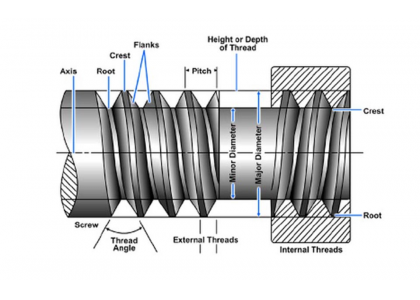
What is pitch?
Pitch refers to the distance between two adjacent helices on a spiral line, usually expressed in millimeters or inches. It is an important parameter of the thread, determining the thread profile, manufacturing process and application scope, etc.
How to Tell the pitch of a screw?
1. Using a caliper: Place the two legs of the caliper respectively between the two adjacent screws on the screw line, and then read the scale value on the caliper to obtain the size of the pitch.
2. Using a spiral plate: Place the screw head on the spiral plate, rotate the screw until it perfectly matches the protrusion on the spiral plate, and then read the scale value on the spiral plate to obtain the size of the pitch.
3. Use an optical measuring instrument: Place the screw on the optical measuring instrument and measure the spacing of the helical lines to obtain the size of the pitch.
How to Choose the Right Measuring Tools?
1.For ordinary screws: The pitch can be accurately measured by using a caliper or a screw plate.
2. For fine screws: Due to their relatively small pitch, using calipers or screw plates is prone to errors. It is recommended to use an optical measuring instrument.
3. For large-diameter screws: Due to their relatively large pitch, there may be certain errors when using calipers or screw plates. It is recommended to use an optical measuring instrument.
Precautions
When using a caliper or a screw plate for measurement, ensure that the contact point between the screw and the measuring tool is smooth to guarantee the accuracy of the measurement results.
When using an optical measuring instrument for measurement, it is necessary to ensure that the distance between the screw and the measuring instrument is stable to guarantee the accuracy of the measurement results.
When measuring the pitch, it is important to distinguish between left-handed and right-handed threads to avoid errors.